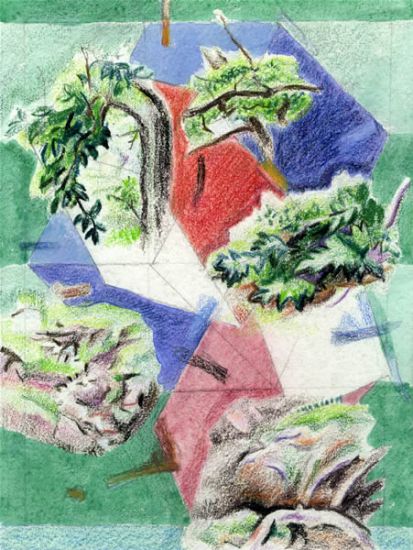
 SOLD
SOLD
James Wood:
Landscape with tree, circa 1920
Unmounted (ref: 1023)
Watercolour over charcoal and pencil, sight size 7 1/2 x 6 in. (19 x 15.3 cm.)
Tags: James Wood charcoal pencil watercolour Canney Abstract Art landscape trees
As an artist and intellectual,Wood was fascinated by ‘the treatment of
form and colour’ and the ‘great advances made by the artists of the
last generation’. Throughout his life he explored
theories about colour and especially the relationship between sound and
colour, which was the subject of a series of articles he published in
The Cambridge Magazine between January and June 1918, in which, as he
wrote,‘the whole problem was dealt with by a number of experts,
psychologists, physicists and artists, in collaboration’. Wood was one of the earliest collectors of Kandinsky. With I.A.
Richards and C.K. Ogden as co-authors, Wood went on to publish The
Foundation of Aesthetics (1922).
In an article on the influence of Kandinsky on British Art, Adrian Glew wrote of Wood as follows:
"
Whilst most of these artists moved
on to different ends - Nevinson would launch the Futurist manifesto
with Marinette several months later - the most specific, enduring, yet
least known influence of Kandinsky on British artists at that time was
on James Wood. He had absorbed the lessons on colour theory,
particularly those establishing correspondences between colour and
musical tones, when studying at Percyval-Hart's art school in Paris in
1909, .... . These views were mirrored in Wood's own paintings, where
the colour correspondences serve specific functions and where the image
vibrates and resonates beyond the canvas."
Work by Wood is in the collection of the Yale Centre for British Art







